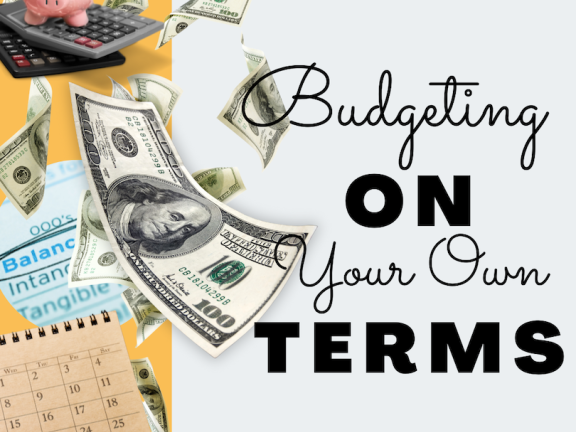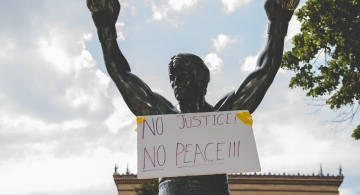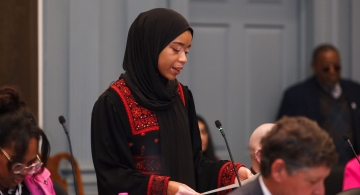Organization-Centered Budgeting

Budgets are a sore topic. At least they were when I worked with nonprofits before my time at IPMF. We approached budgeting with timidity and worry because it was often created with a sense of having to justify our work to some sort of authority, such as funders or the IRS. Through the IRS auditing process we had to prove our organization was accurately handling and presenting its finances. With funders, there seemed to be an unspoken pressure to prove that our organization was “worth” funding and the budget was among the evidence used to make the case that we were “worthy of investment.”
This made me wonder, outside of the pressure to meet external expectations, how does a budget truly serve an organization? And how can it be used as a strategic tool for organizations, and projects, to create, to imagine, and to expand? I sat down with IPMF’s Finance Director, Chris Capato*, to get down to the heart of budgeting and how organizations can approach it with a new sense of ownership and utilize it to envision and shape their path.
*Note: we invite current IPMF grantees who have questions about their budgets or budgeting in general to reach out to Chris.
Enni Aigbomian: At times creating a budget can be centered around funders and meeting their grantmaking criteria. Outside of the pressure to meet funders expectations, how does creating a budget serve organizations?
Chris Capato: As someone that worked for organizations seeking funding for years, I believe budgets should prioritize an organization’s needs rather than funder expectations. Organizations should use budgets as a high-level look into how monetary resources will be used that budget year to achieve their mission and vision.
To create your budget ask yourself “I have these goals and strategies but what resources will I need to make them happen?” Once you have a clearer picture of the cost of the work, as well as the income sources needed, a budget allows you to not only plan, but monitor, your organization’s/project’s monetary resources on an ongoing basis.
Enni: Do you think budgeting is an art or a science? Is there only one way to create a budget or can there be various versions of a budget?
Chris: For me, budgeting has always been more scientific because it needs to reflect the reality of what you can provide, what you can do, and what money you can raise, even if it's aspirational. I think the best way to approach budgeting is creating a timeline and reaching out to the stakeholders, such as board members or program and finance staff, who can help you craft that budget.
There are various versions, depending on the type of organization that's creating the budget. An organization that’s mostly reliant on charitable contributions will make more educated assumptions in their budget versus a fee-for-service organization that will have a good understanding of what their volume is and how they’re getting paid.
Enni: How do you develop and use a budget template?
Chris: I recommend setting up budget templates based on how income and expense accounts, as well as departments and programs, are set-up in the accounting software. This approach provides efficiency and ease when entering the budget into software in order to run interim financial statements during the year. If you are a new organization setting up a budget for the first time, or wish to take a fresh approach as an existing organization, there are plenty of resources available online, such as the National Council of Nonprofits. Click here to check out their budgeting resources.
SETTING BUDGET GOALS
Enni: What are budget goals and why do they matter in budgeting? Is it possible to be too aspirational with your budget goals?
Chris: To complete a budget, it’s important to determine the timeline for, and goal of, the budget before you get started. Typically, your board will want to review your budget, likely at the last board meeting of the prior fiscal year. If your new fiscal year starts on January 1, and your board meets in early December, you may decide to start working on the budget in September, or early October.
To start, think about your organization’s goals and how you’ll create a budget around them. Are you readjusting your previous year’s budget to include the expected changes for your upcoming year? Are you thinking with an aspirational and growth mindset? If you’re going to be aspirational, do so within reason. If you are looking at expansion, consider it within constraints of what may be available from your funding sources. If you can, before finalizing an aspirational budget, talk to some of your funding sources about what you want to do and see what’s available to you.
FORECASTING AND MAKING HEALTHY BUDGET ASSUMPTIONS
Enni: How does an organization or project forecast future revenue and expenses?
Chris: To forecast, look to the past, using your organization’s historical data for a good indication of what you might be able to do in the future. Your salary and benefit costs, and maybe your rent and utilities, are expenses you know for certain. There are going to be revenue and other expenses that you don't know exactly what's going to happen next year. If you don't have secured sources of income, you will have to forecast revenue.
If you have certain funders or contracts that are a large percent of your revenue, it's important to remain in active dialogue with them regarding their intentions for any future funding so you can forecast more accurately. For your individual donors you can make a reasonable assumption of the levels of giving you can expect from them in the future.
If your organization is new to budgeting and doesn’t have that historical data, but you have a good sense of where you can look for funds to support your organization, use that information to forecast potential revenue streams. To forecast expenses, if you're an expert in your field, you most likely have a sense of what it's going to cost to deliver the product or service.
Enni: Can you tell us about the rainy day fund? And why is it important?
Chris: A rainy day fund is important because no one has complete control over their revenue. More than likely your revenue is not going to be even over months, quarters or years. To run a stable organization you need that flexibility to be able to ride out the ups and downs of fundraising for an organization. A rainy day fund to help flatten out those peaks and valleys in your revenue over the long term. In a situation where you have funding that's exceeding some of your costs, you're going to want to build that rainy day fund because if you have a lull in fundraising, you'll be able to smooth out that valley. I think a lot of organizations saw the value of a rainy day fund when the pandemic hit three years ago.

CREATING ROOM FOR FLEXIBILITY IN THE BUDGET
Enni: After a budget is finalized, what does engagement with the budget look like throughout the fiscal year?
Chris: Once the budget is approved by the board, I recommend entering the budget into your accounting system. If you’re using QuickBooks, you can enter the budget by month. As you are moving through the fiscal year, run quarterly profit and loss statements and compare them to the budget. You should start seeing patterns on where you're meeting revenue expectations, and where you’re at with expenses. It's really important to look at these trends throughout the year and make any necessary adjustments. This is how to use the budget as a tool throughout the year so you're not surprised at the end of the year when revenue isn't what you expected or expenses are higher than budgeted.
Enni: Is there room for flexibility within the budget?
Chris: There's flexibility within a budget - they are not etched in stone. Budgets are tools to help us manage our nonprofit businesses and I'd encourage everyone to use them as such. In most cases, we're starting a budget four or five months before a fiscal year begins. Between that time and the end of the fiscal year that the budget is for we're looking at 16 to 17 months from now.
A lot can happen in that time and if you expect an expense is going to be more than budgeted, look at other expenses to see where you're coming in under budget. On the revenue side, if you are fortunate enough to have multiple sources of revenue, you'll appreciate the ability to be flexible when one side of revenue is up and another one is down.
BUDGETING FOR SMALL AND FISCALLY-SPONSORED ORGANIZATIONS
Enni: Does a sole proprietor of a fiscally sponsored organization need a budget? If yes, what does that budget look like?
Chris: You do need a budget if you are able to draw a salary and some benefits from your organization. It's not that different from a large organization that has 10 employees with an executive director and programming staff. You just want to be sure to factor in the costs of the employees (even if it’s just yourself) and include the programming costs associated with the service you’re delivering.
You’ll want to capture those costs so you can fundraise enough for you to cover those costs. Ideally your revenue includes grants, donations, and earned revenue (for example, ticket sales to events, and merchandise). The budget should also include the costs of providing the programming that you intend to offer the community. Doing this demonstrates the total funds needed for the organization to run on a sustainable basis. And if you're fiscally sponsored, remember to include the fiscal sponsorship fee in your budget.
For more guidance around how to design a budget, check out the National Council of Nonprofits' budgeting resources.
We invite current IPMF grantees who have questions about their budgets or budgeting in general to reach out to Chris.

